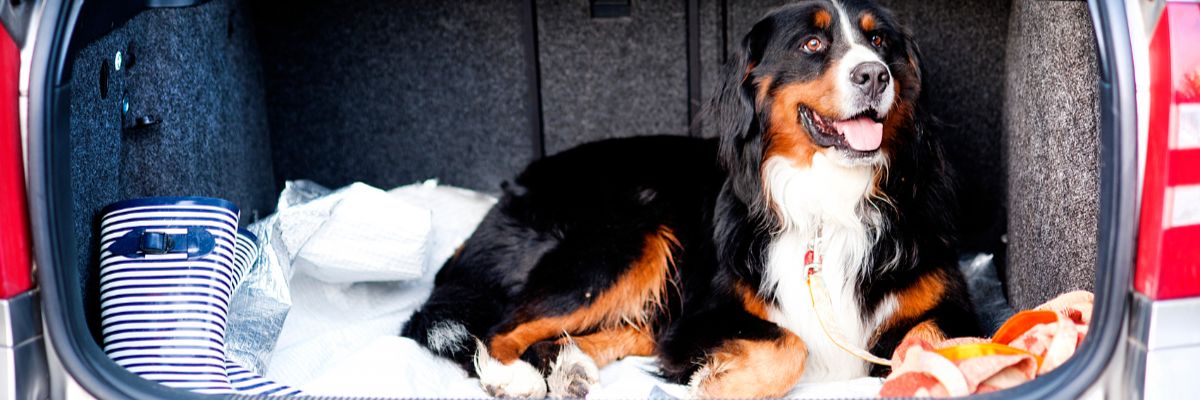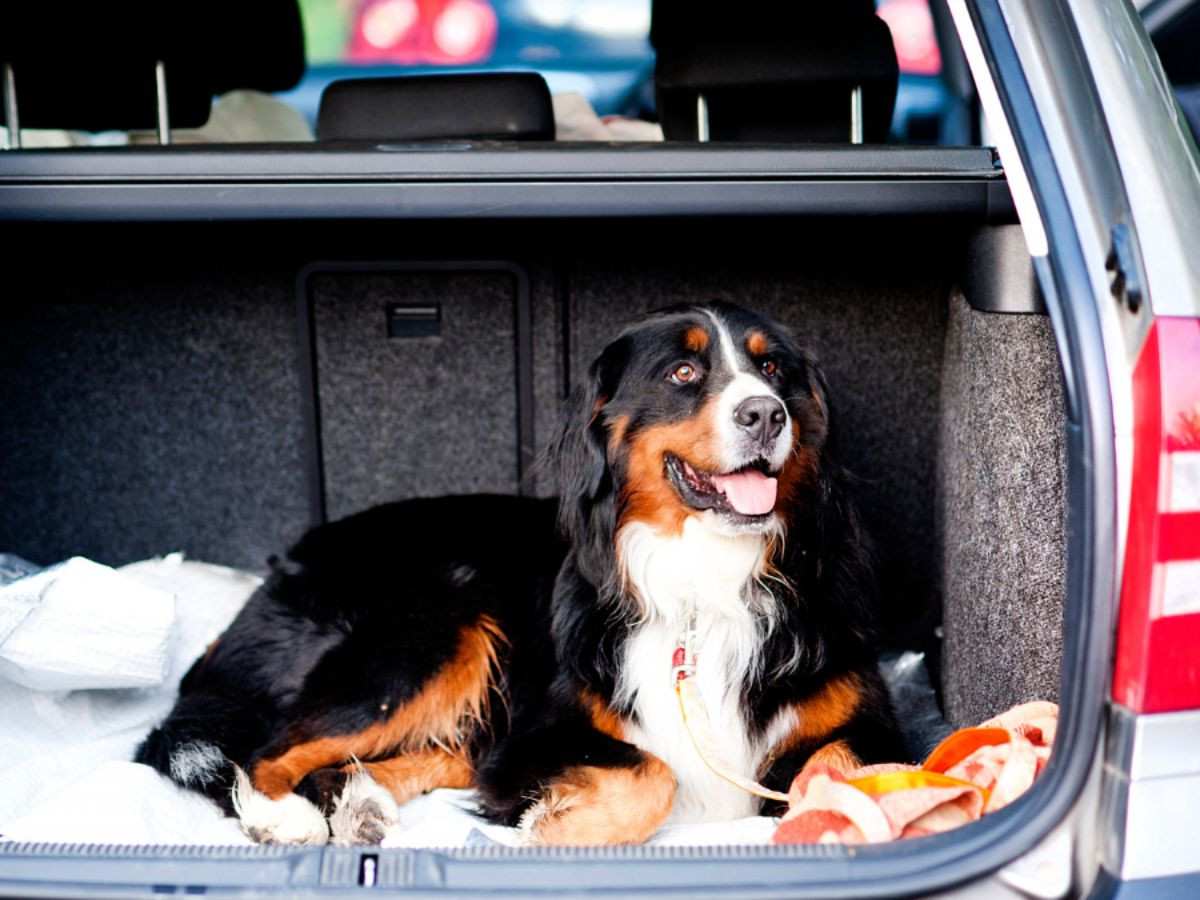Do you need help?

Now the weather is warmer, many of us are looking to spend more time outdoors; which often means bringing our dogs along for the journey. From short trips to the park or a longer escape, it’s important to make sure your dog travels safely and comfortably.
Here’s how to keep your dog calm, secure, and happy on the move.
Is it safe for dogs to travel in cars?
Yes, but with the right precautions. Dogs can travel safely in vehicles, but they should never roam freely inside the car. Much like humans wearing seatbelts, dogs need to be appropriately restrained. Not only does this protect them in the event of a sudden stop or accident, but it also prevents them from distracting the driver – a legal requirement under rule 57 of the Highway Code which can see a £5,000 fine if not restrained properly.
The code also advises against allowing dogs to travel in the front passenger seat, especially if the car has a passenger airbag.

Top tips for stress-free car travel with your dog
1. Use a proper restraint system
- Make sure your dog is secure using one of the following:
- A seat belt harness
- A travel crate or pet carrier, secured so it won’t move in transit
- A dog guard in the boot of your car
- Whichever option you choose, it must prevent your dog from interfering with the driver or moving freely around the vehicle.
- Important: Never attach a seatbelt directly to your dog’s collar as this could cause serious injury in a collision.
2. Build confidence slowly
- If your dog isn’t used to the car, introduce the experience gradually.
- Let them explore the car while stationary
- Offer treats or toys to build positive associations
- Start with short, calm journeys and gradually increase the distance
- Keep an eye out for signs of anxiety, such as panting, whining, drooling, or restlessness.
3. Plan regular breaks
- On longer journeys, stop every 1.5 to 2 hours to allow your dog to:
- Stretch their legs
- Go to the toilet
- Have a drink of water
- Always use a lead when letting your dog out of the car and choose safe areas well away from traffic.
4. Avoid car sickness
- Some dogs, especially puppies, may suffer from motion sickness in the car. Try the following to ease symptoms:
- Travel with an empty stomach (no food 2–3 hours before a journey)
- Keep the car well-ventilated and cool
- Use calming sprays or pheromones (your vet can advise)
- Speak to your vet about medication if sickness is severe or persistent
5. Never leave your dog alone in the car
- Even with the windows open, the temperature inside a car can rise dangerously within minutes. Heatstroke can be fatal, and it happens fast. If you’re travelling with your dog, make sure someone stays with them at all times.
- If your dog is suffering from heatstroke, cooling your vehicle before transport is absolutely critical. Every minute counts and delays or improper cooling methods can significantly decrease your dog’s chances of survival.
- To make sure you’re prepared, we’ve put together a quick, easy-to-follow infographic with essential tips for safely transporting your dog in a heat-related emergency. Click here to download it now.
6. Pack a travel kit for your dog
- Being prepared can make the journey smoother for both of you. Make sure to bring:
- Fresh water and a portable bowl
- A lead and harness
- Poo bags
- A favourite toy or blanket for comfort
- Treats (but avoid overfeeding if prone to travel sickness)
Signs your dog is comfortable in the car
A dog who is well-adjusted to car travel will usually:
- Settle down quickly once the journey starts
- Show relaxed body language (lying down, soft eyes, calm breathing)
- Appear eager to get into the car for future trips
Travelling with your dog can be a great way to share adventures and explore new places together. By making safety and comfort a priority, you’ll help ensure every journey is a positive one for both of you.

